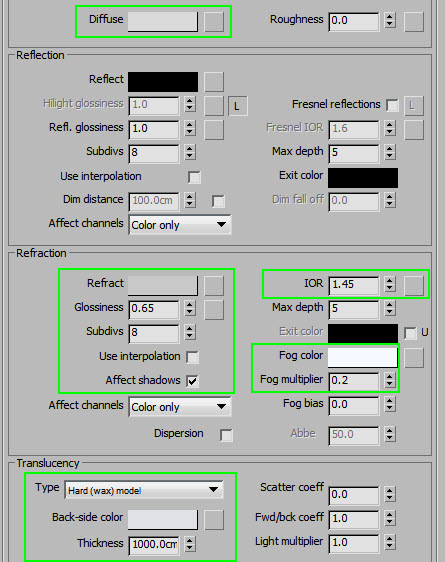Translucent Plastic can be a very difficult material to get right. Theoretically, it would be best achieved with a FastSSS2 material and Refractive scatter type… IF it had an option for Refraction Glossiness. However, since this feature has been ‘in development’ for a few years now, we have to use a different method.
Use a VrayBlend with two layers to simulate this effect. The first layer is there to give the SSS or translucency effect, while the second layer gives some actual refractions and reflections to the material.
The SSS layer has no reflections and a Refract Gloss set to somewhere around 0.65. This value can be adjusted to control the spread of light inside the object.
Translucency is turned on and set to Wax mode. A bit of color is added to the Back-Side color slot and the Fog color slot.
The resulting shader looks good, but lacks transparency (Refractions) and Reflections.
To add the missing elements, we need a new layer in the blend. Set it up as a very refractive plastic with strong reflections and adjust the gloss as needed. We are cheating a bit with the Refraction IOR, which is just for very thin objects. If your model has thicker geometry, feel free to use the standard 1.45~2.4 range for plastics.
The two materials are blended together by adjusting the blend amount color. For a more solid, translucent look, use darker colors. For a more transparent look with less SSS, increase the brightness of the blend amount.
For different colored plastics, just play around with the colors in both shaders. They need to be roughly similar in hue (Diffuse, Back-Side, and Fog).








Comments
Thank you so much! It’s a very nice method.